Get PeakVisor App
Sign In
Search by GPS coordinates
- Latitude
- ° ' ''
- Longitude
- ° ' ''
- Units of Length

Yes
Cancel
Share ×

Scan the QR code and open PeakVisor on your phone
❤ Wishlist ×
Choose
Delete
Boasting a spectacular array of natural landscapes, amazing wildlife, friendly people, and a rich cultural history, the country of Australia is truly a wonder to behold.
There are 21865 named mountains in Australia, the highest and most prominent of which on the mainland is Mount Kosciuszko. Additionally, the highest and most prominent mountain in Australia’s external territories is Mawson Peak.
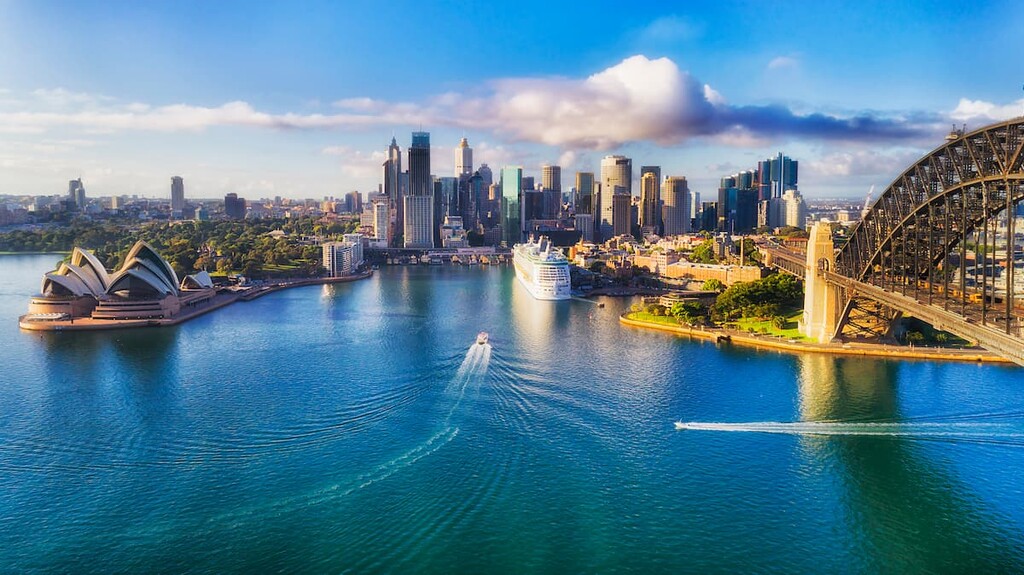
The country of Australia is located at the intersection of the Indian and Pacific oceans. It encompasses the entirety of the world’s smallest continent as well as many of its surrounding islands.
With a total land area of some 7,686,850 square kilometers (2,967,910 square miles), Australia is the sixth largest country on Earth after Russia, Canada, China, USA, and Brazil. Furthermore, it is more than twice the size of the next two largest countries, India and Argentina.
Due to the fact that it is isolated from all the other continents, Australia is often considered to be an island continent. It is also sometimes considered to be the largest island in the world, but this status is normally reserved for non-continental islands such as Greenland (Denmark), New Guinea (Indonesia, Papua New Guinea), Borneo (Indonesia and Malaysia), and Madagascar.
The country of Australia is completely surrounded by water on all sides. This includes the Indian Ocean to the west, the Timor Sea, Arafura Sea, and Torres Strait to the north, the Pacific Ocean and the Coral Sea to the east, the Tasman Sea to the southeast, and the Southern Ocean to the south.
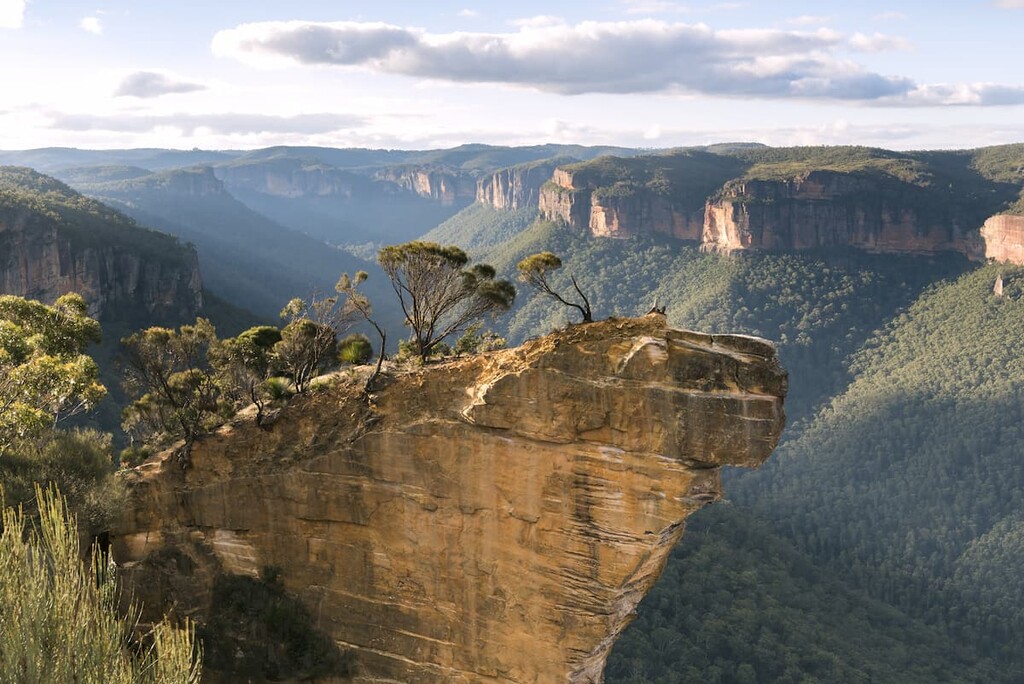
As it is surrounded by water, Australia has no international land borders. However, it is located in fairly close proximity to a number of other countries.
This includes New Zealand to the south east and the islands of New Caledonia (France), Vanuatu, and Fiji to the northeast. Furthermore, Australia is located to the south of Papua New Guinea, Solomon Islands, New Guinea, Timor-Leste, Indonesia, and Malaysia.
However, Australia’s next closest neighbors to the west are the islands of Mauritius and Réunion (France), and Madagascar.
The country of Australia is officially divided up into six states, three internal territories, and seven external territories, each of which has its own unique topography, outdoor recreation areas, and exciting places to visit. These include:
Located in southeastern Australia, the state of New South Wales (NSW) is located to the south of Queensland, to the north of Victoria, and to the east of South Australia. It also contains the Australian Capital Territory as an enclave and it borders the Jervis Bay Territory.
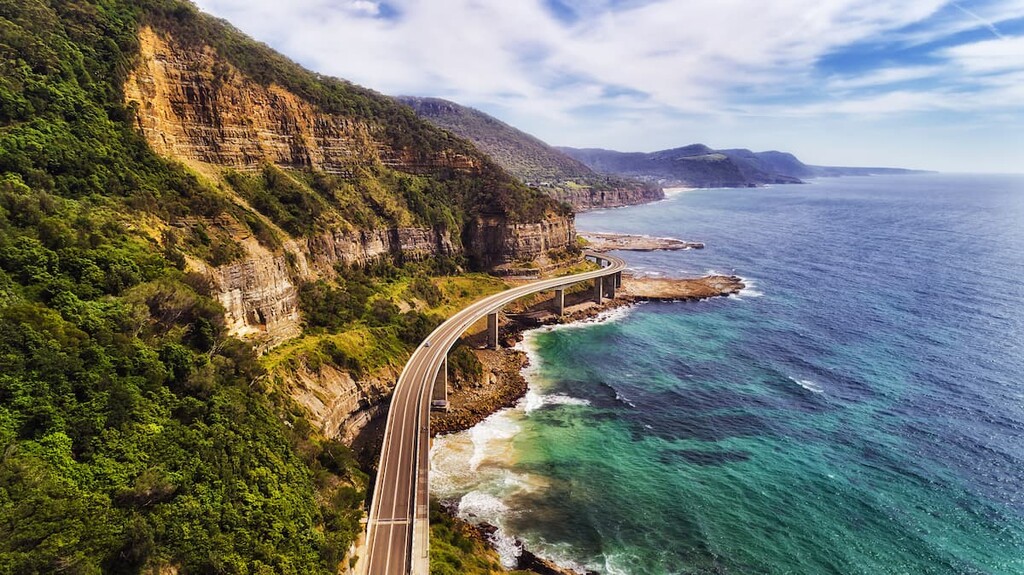
New South Wales is home to Sydney, which is the most populous city in the country. The state is also the most populous state in the country.
The land that is now called New South Wales has been inhabited by First Nations for tens of thousands of years. Some of the many First Nations that have traditional territory in the region include the Bundjalung, the Wiradjiri, the Yuin, the Ngiyampaa, the Ngarigo, and the Gamilaray.
New South Wales is topographically quite diverse. It is home to parts of the Great Dividing Range, including the country’s highest mainland peak, Mount Kosciuszko. The state is also home to some of the only viable skiing areas in the country.
Meanwhile, the western part of New South Wales is substantially flatter and it is dominated by agricultural lands. This region is mostly savannah with the northwesternmost part of the state qualifying as part of the Australian Outback.
Within New South Wales, there are 225 national parks and an additional 551 other protected areas. Some of the most popular parks include:
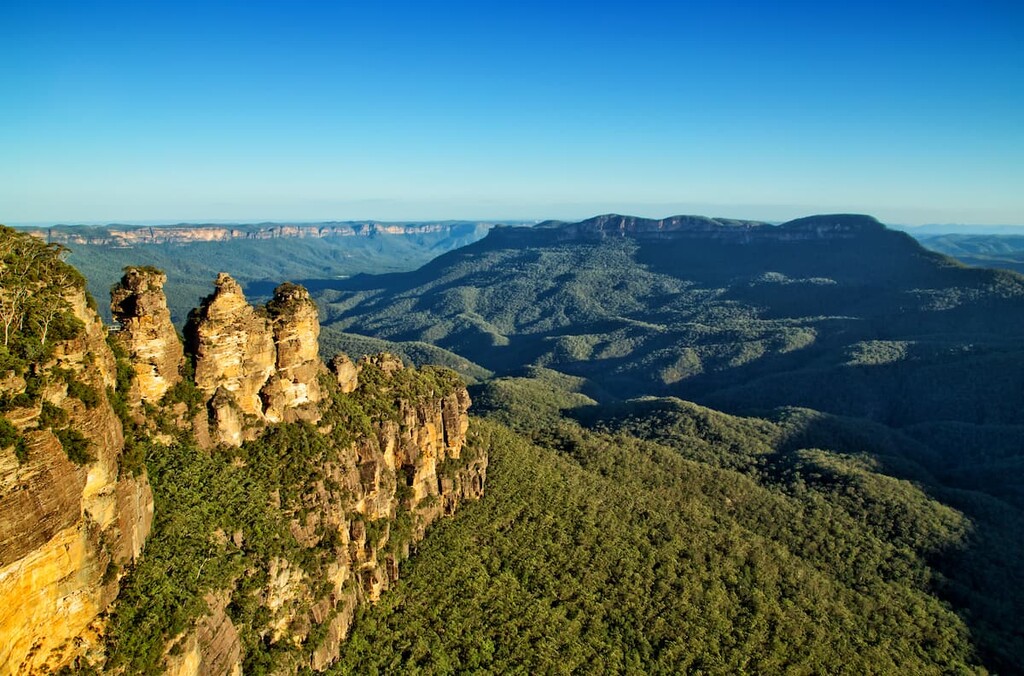
New South Wales also includes the famous Gondwana Rainforests of Australia World Heritage Area, which is a UNESCO World Heritage Site that’s located in the eastern part of the state.
The second largest and the third most populous state in Australia, Queensland is a state located in the northeastern part of the country. It borders New South Wales and South Australia to the south and the Northern Territory to the west.
Interestingly, Queensland is also the sixth largest subnational entity in the world and it is larger than all but 15 of the world’s countries. There are more than 5 million people that live in Queensland, though the vast majority live in the coastal regions, particularly around Brisbane and Gold Coast.
The land that is now called Queensland has long been inhabited by First Nations. Torres Strait Islanders were almost certainly among the first peoples to inhabit this region, which is now part of the traditional territory of dozens of First Nations.
Due to the sheer size of Queensland, it is home to a great array of topographical diversity. It includes everything from the mountains of the Great Dividing Range to rainforests and the Outback.

Within Queensland, there are over 1,000 national parks. Some of the most popular include:

Located in south-central Australia, the state of South Australia is the fourth-largest state by area and the fifth-largest in terms of total population. However, although there are nearly 2 million people in South Australia, more than three-fourths of the state’s residents live in the state capital of Adelaide in the southern part of the state.
Like all other parts of what is now Australia, the region that is now called South Australia is part of the traditional territory of dozens of First Nations, including the Ngaanyatjarra, Kaurna, Maraura, Adnyamathanha, and Ngarrindjeri.
South Australia is home to some of the most arid parts of the country. Indeed, it is almost completely dominated by the desert of the Outback, with the exception of some grasslands and temperate regions in the southern part of the state.
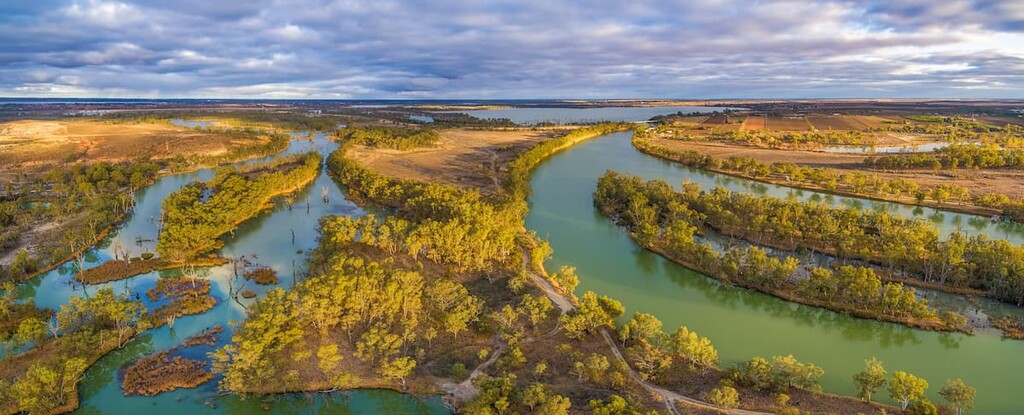
There are currently 360 national parks located within South Australia. Some of the most popular include:
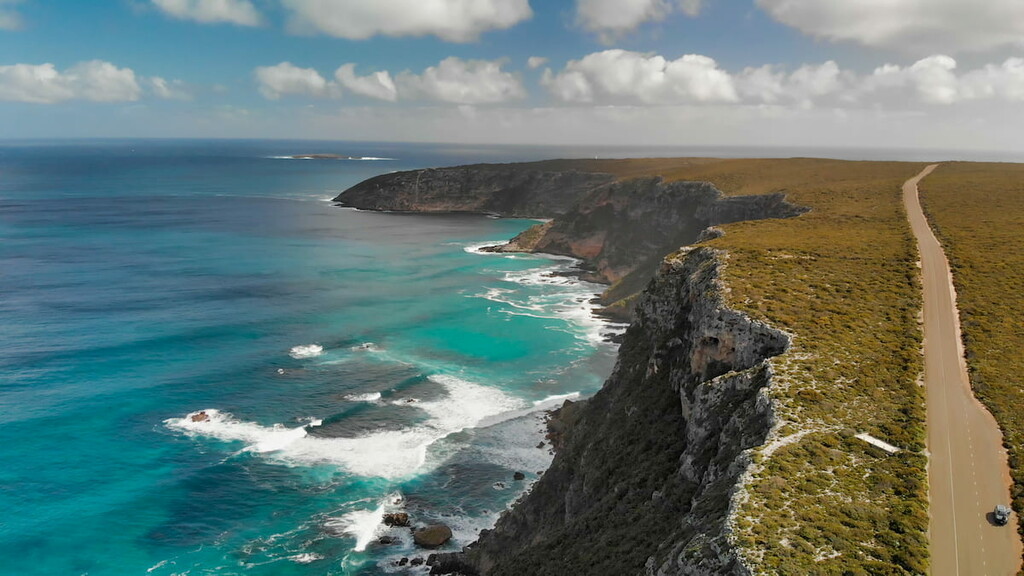
The state of Victoria is located in the southeastern part of Australia. It is bordered to the north by New South Wales and to the west by South Australia. It is also separated from Tasmania by the Bass Strait.
Victoria is the second-smallest state in Australia after Tasmania, though it is the second-largest by population. In fact, with a population of over 6.6 million people, it is one of the most densely populated places in the country. However, the vast majority of Victorians live in or around Melbourne, which is the country’s second-largest city.
The land that is now Victoria has been home to First Nations for tens of thousands of years. Some of the many peoples with ancestral ties to this land include the Wotjobaluk, Yorta Yorta, Jaadwa, Gunditjmara, and Jupagulk.
Despite its small size, Victoria is home to a great array of topographical diversity. It contains parts of the Great dividing Range, including some alpine areas where skiing is possible in the winter months. However, although Victoria is one of only two states (the other being Tasmania) that doesn’t contain any part of the Outback, Victoria does have some beautiful temperate regions.
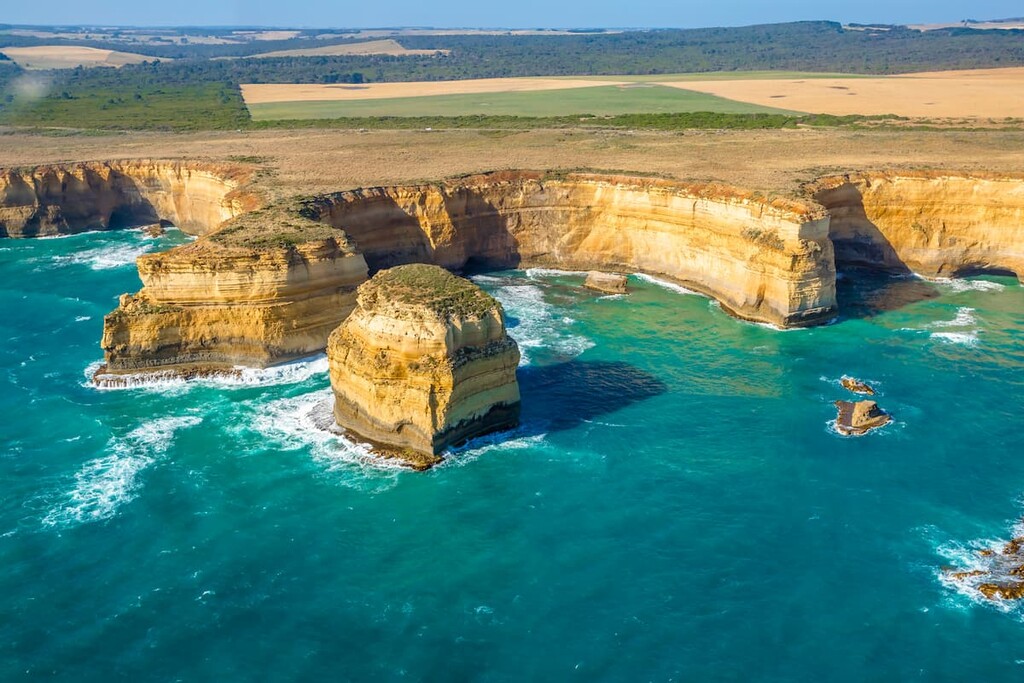
There are 45 national parks in the state, some of the most popular of which are:
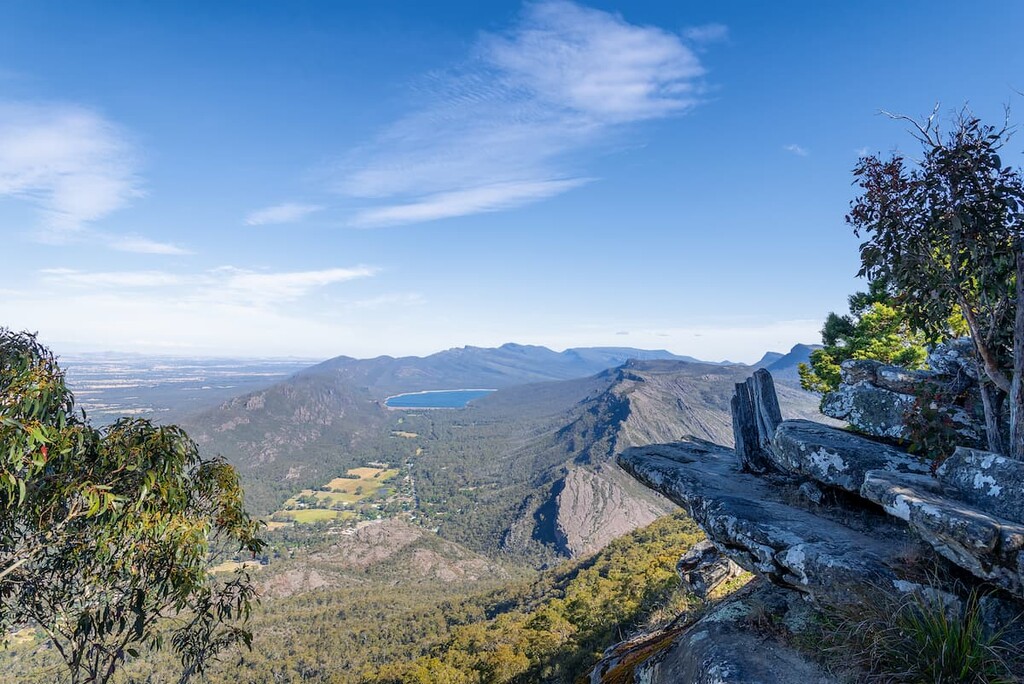
Australia’s largest state, Western Australia contains nearly one-third of all of the country’s land area. It encompasses the entire western part of the country and, with a land area of 2,527,013 square kilometers (975,685 sq mi), it is the second largest subdivision in the world after the Sakha Republic of Russia.
Despite being the largest Australian state, however, the vast majority of Western Australia’s 2.6 million residents live in the southwestern corner of the state near Perth.
Furthermore, humans have lived in what is now Western Australia for around 60,000 years. Major groups with ancestral ties to the region include the Noongar, Wajarri, Wangkatha, and the Ngaanyatjarra.
The central part of Western Australia is dominated by the arid conditions of the Outback. However, the northern part of the state in the region called the Kimberly is quite tropical while the land around Perth has a subtropical climate.
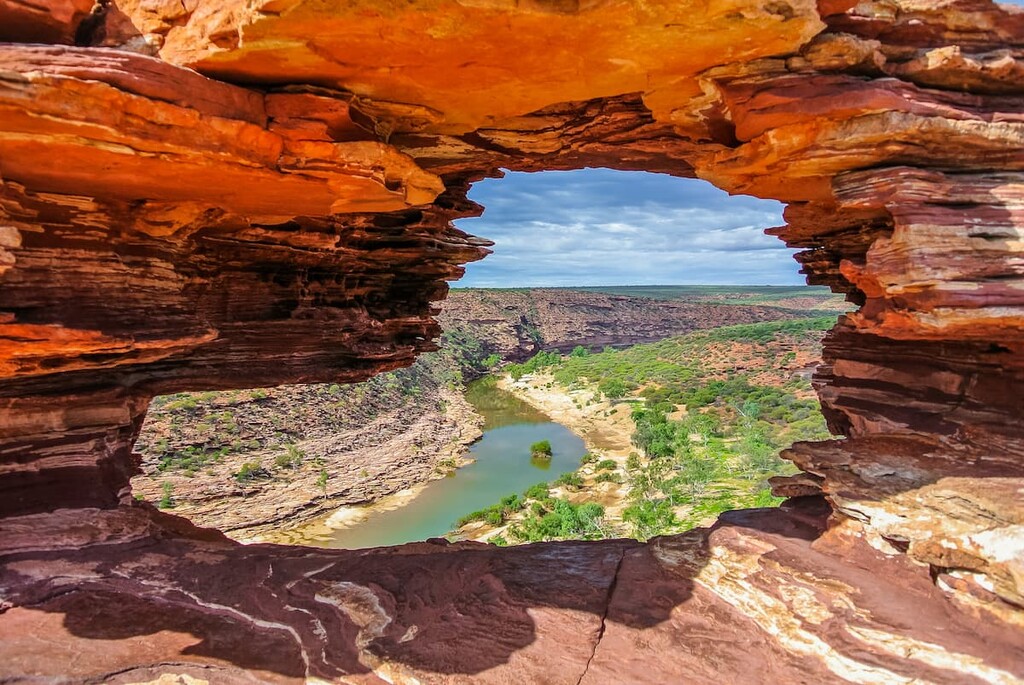
There are 60 national parks in Western Australia, including:
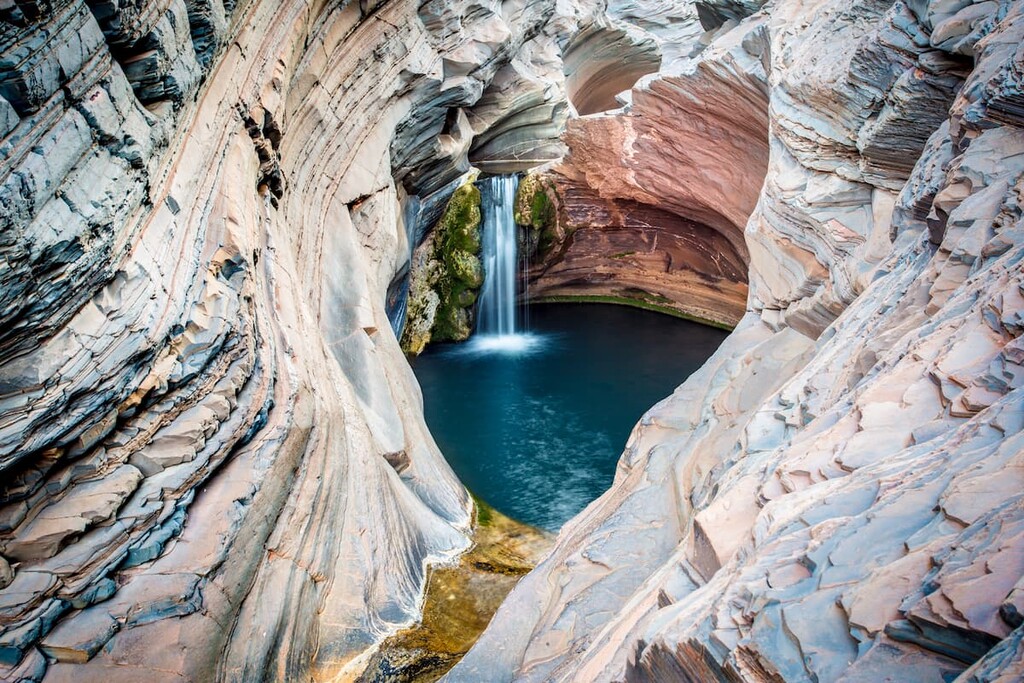
The sixth and final state of Australia, Tasmania is the smallest state in the country. It is situated just to the south of Victoria across the 240 km (150 mi) long Bass Strait and it contains all of the island of Tasmania as well as some 334 surrounding islands.
Tasmania is the smallest and least-populous state in Australia. However, it is known for its stunning natural beauty, which is a focal point for the region. Within the state, the largest city is Hobart, which also happens to be home to about 40% of the population.
Humans have lived in what is now Tasmania for approximately 30,000 to 40,000 years. Aboriginal Tasmanians are believed to have been cut off from the rest of what is now Australia as sea levels rose around the year 6,000 BCE.
Despite its small size, Tasmania is home to a superb collection of parks. Much of the island is mountainous, so it’s the perfect place to hike and adventure. Some of the most popular of Tasmania’s 19 national parks include:
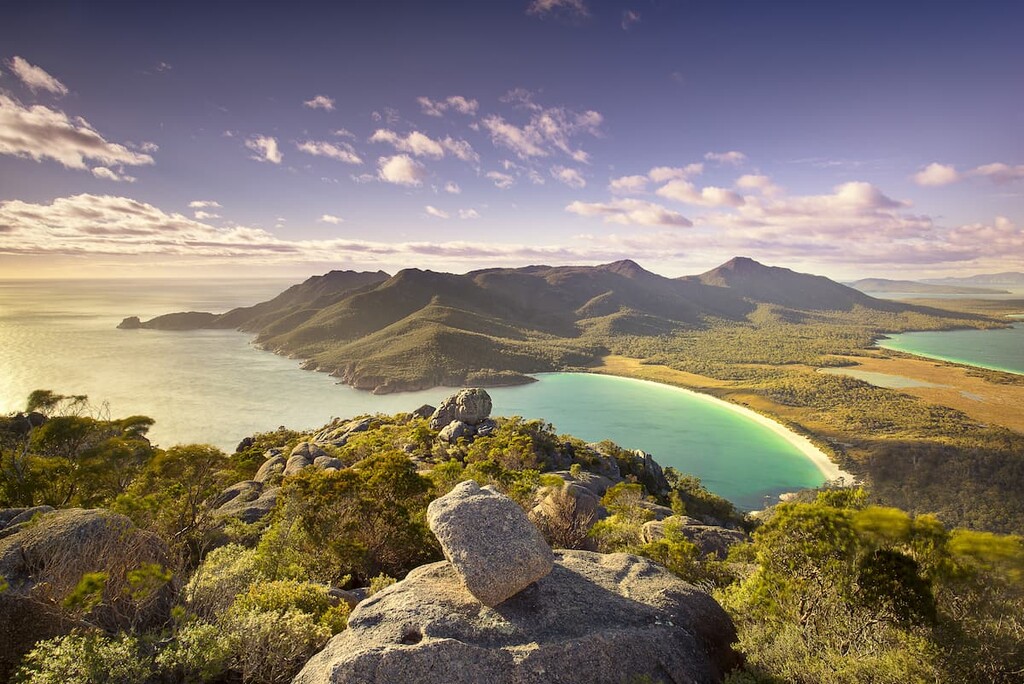
The Australian Capital Territory is one of three internal territories of Australia. It is an enclave within the state of New South Wales and it contains the city of Canberra, the nation’s capital, and some of the surrounding townships.
The territory has been inhabited by First Nations for at least the last 25,000 years. For the most part, the region is part of the traditional territory of the Ngunnawal people.
Although it is very small, the Australian Capital Territory does contain parts of the Great Dividing Range. In fact, it contains parts of a number of parks and reserves, including:
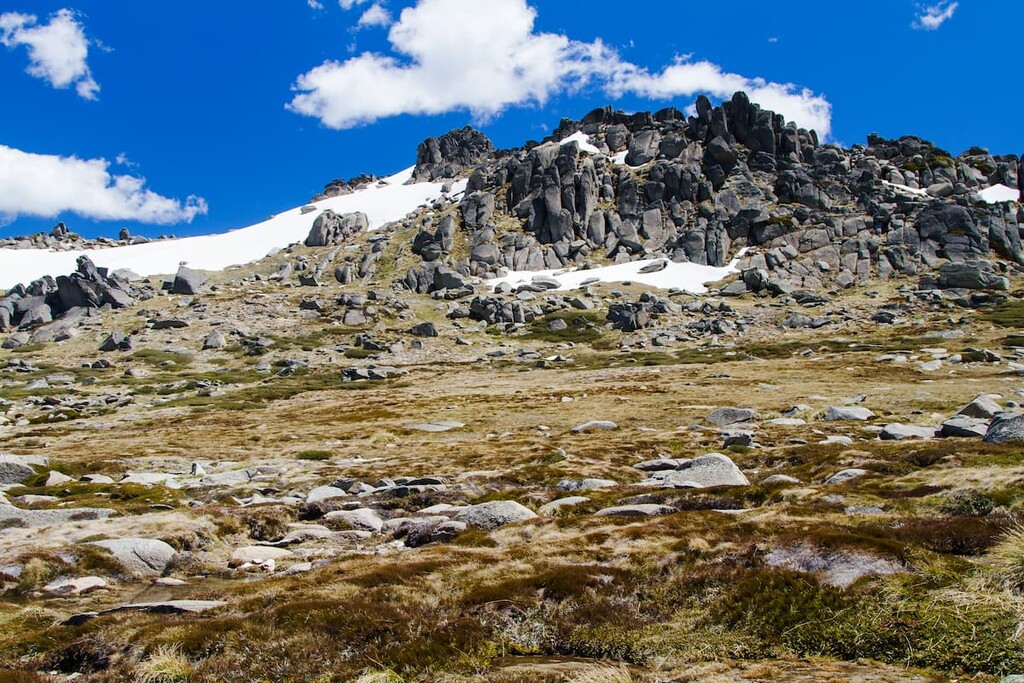
Australia’s smallest internal territory, the Jervis Bay Territory is located on the coast of New South Wales. It has a population of only 400 people and a total area of only 67 square kilometers (26 square miles).
Why does Australia have such a small internal territory, you might ask? Well, the Jervis Bay Territory was created in 1915 to ensure that the land-locked Australian Capital Territory would always have access to the sea.
That being said, the Yuin people have a long and storied traditional connection to the land that is now part of the Jervis Bay Territory.
These days, much of the territory is managed as part of the Booderee National Park and Botanic Gardens. The park is now co-managed by both the Wreck Bay Aboriginal Community Council and Parks Australia.
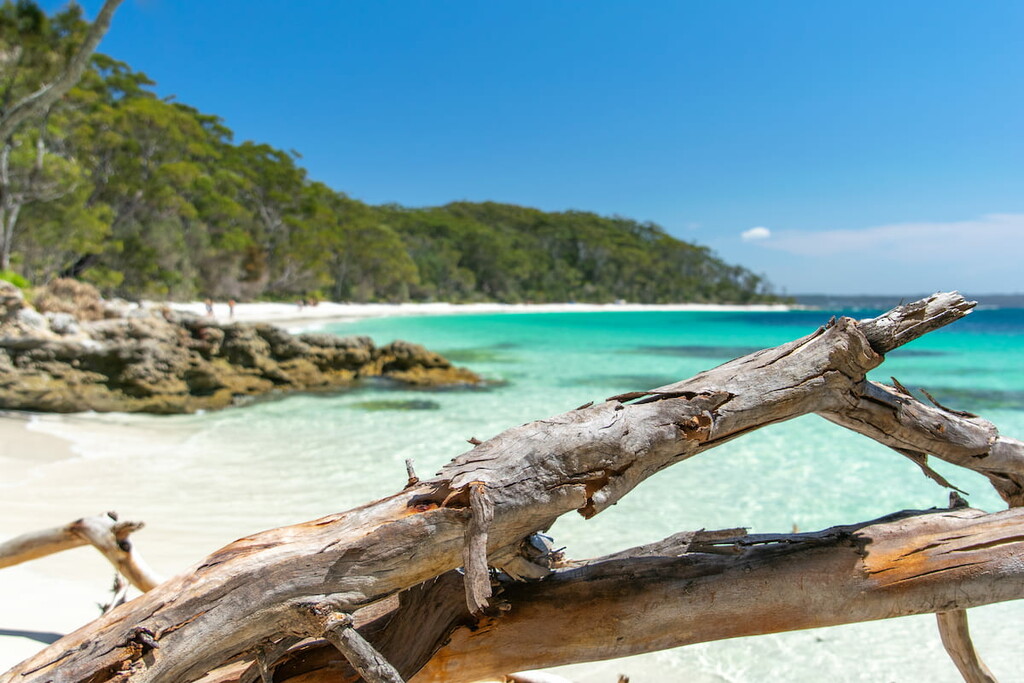
Australia’s largest territory, the Northern Territory encompasses much of the north-central part of the country. It is bordered to the west by Western Australia, to the east by Queensland, and to the south by South Australia.
The Northern Territory is the third-largest subdivision in Australia though it has a population of just 246,000 people. Much of the region’s economy is based on mining, oil extraction, and agriculture.
Humans have lived in what is now the Northern Territory for approximately 60,000 years. Some of the many peoples with traditional territory in this region include the Arrernte, the Yolngu, and the Tiwi people.
While the northernmost part of the Northern Territory around Darwin is tropical, the central part is mostly grassland and the southern region of the territory is part of the Outback.
Nevertheless, there are some superb national parks in the Northern Territories including:

In addition to its six states and three internal territories, Australia has claims to other external lands outside of the continent of Australia, the island of Tasmania, and the nearby surrounding islands.
These territories include:
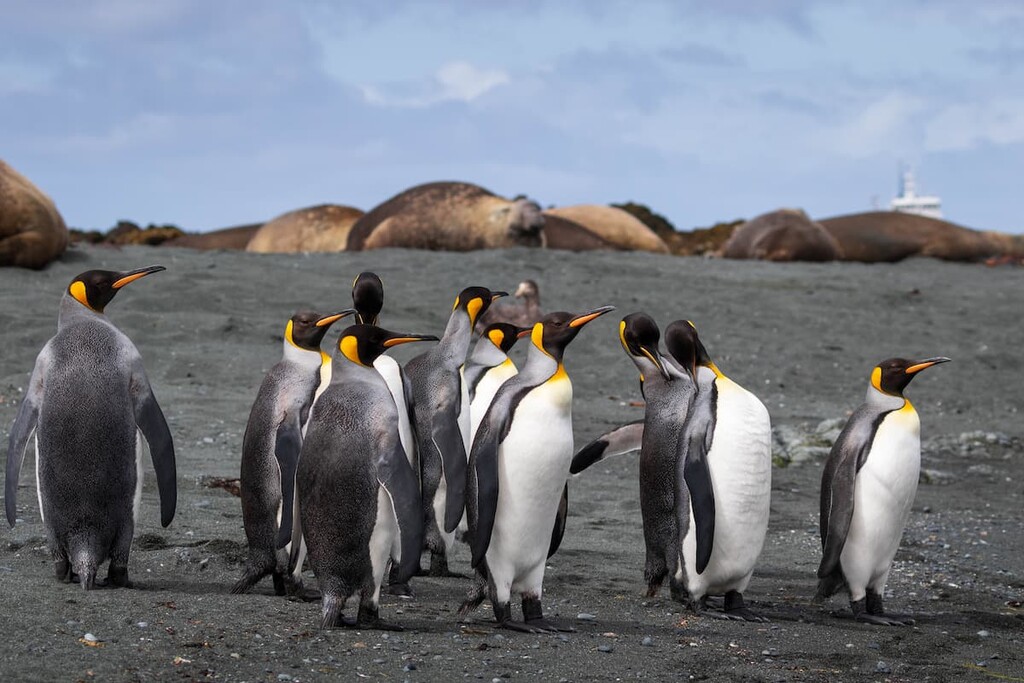
However, with the exception of Christmas Island, Cocos (Keeling) Islands, and Norfolk Island, the majority of the Australian external territories have no permanent population.
Technically speaking, the claimed Australian Antarctic Territory is the largest of Australia’s external territories. However, it is disputed as part of the Antarctic Treaty which came into force in 1961 and does not recognize national claims to the Antarctic continent. At the time of writing, only New Zealand, France, Norway, and the United Kingdom recognize Australia’s claims to Antarctica.
That being said, there are a number of national parks and reserves in Australia’s external territories. These reserves include:
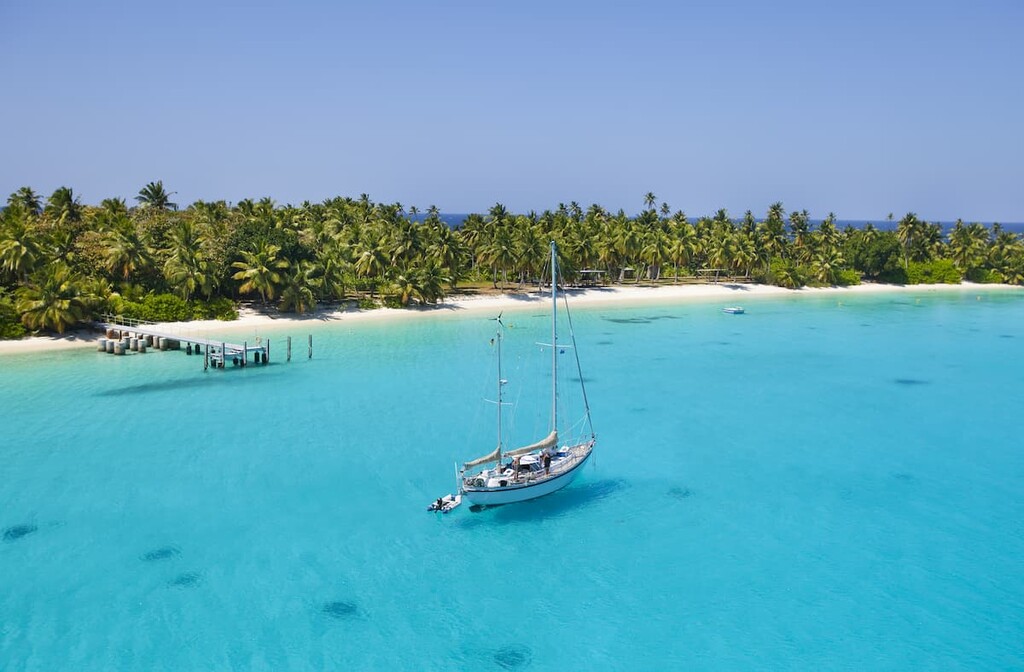
As a continent and a country, Australia is home to a superb array of geologic features and a particularly complex geologic history.
From a big picture perspective, the continent of Australia formed as a result of tectonic activity
Over the millennia, the land that is now called Australia was part of the majority of the Earth’s supercontinents. However, it has been perhaps most affected by its setting within the supercontinent of Gondwana.
During the early Cenozoic, Australia and Antarctica were connected as part of Gondwana. A rift began to develop between them during this time but it wasn’t until about 40 to 30 million years ago when the Tasman Gateway (a.k.a. The Tasmanian Passage) formed that the two land masses officially separated.
With the formation of the Tasmanian Passage, the Indian and Pacific oceans were connected, allowing for the formation of the Antarctic Circumpolar Current.
The Antarctic Circumpolar Current separates the comparatively warmer waters of the southern Atlantic, Pacific, and Indian Oceans, isolating the continent of Antarctica and the Southern Ocean from the rest of the world. This process, in part, allowed Antarctica to develop the frigid climate that has characterized it over the last tens of millions of years.
At the same time, this separation of the Antarctic and Australian plates and, in particular, the northward movement of the Australian plate led to an arc-continent collision between the Australian plate and both the Caroline and Phillipppine plates. This eventually formed the New Guinea Highlands that are found on the island of New Guinea.

Some of the rocks in Australia are among the oldest in the world. Parts of the continent’s bedrock dates back 3 billion years, though there are also substantially younger rocks in the country that formed through volcanic activity within the last few thousand years.
Furthermore, much of the topography that we see in Australia today is a result of the widespread glaciation that took place in the continent during the Permian. During this time, Australia was covered in ice, and, when the ice melted, it left behind a large sedimentary basin called the Eromanga Basin, which is now found in South Australia.
The Paleogene and Neogene periods saw the formation of other major sedimentary basins in the region. It also saw the uplift of the Eastern Highlands and the Great Dividing Range, both of which dominate their respective landscapes.
Meanwhile, during this same time, Australia also experienced quite a lot of volcanic activity both on the mainland and in what is now the Australian External Territory of Heard Island and McDonald Islands.
In more recent years, Australia was heavily glaciated during parts of the Quaternary period. This time period saw a number of glacial and interglacial periods, though the last glacial period was at its largest extent about 20,000 years ago. By about 11,700 years ago, however, the seas had risen to the point where both New Guinea and Tasmania became their own islands.
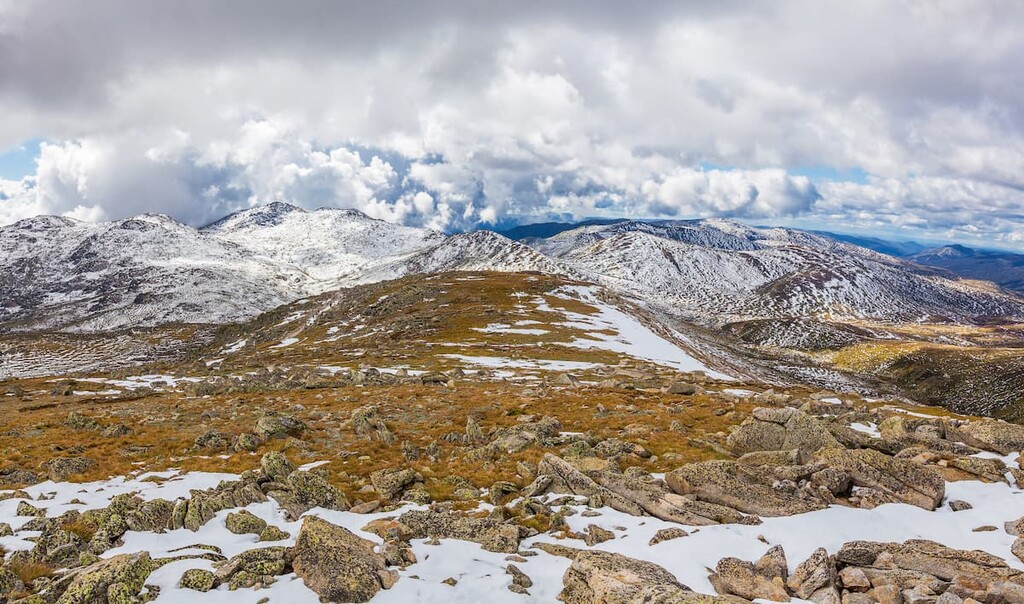
Major peaks in Australia include Mount Kosciuszko, Mawson Peak, Mount Townsend, Mount Twynam, Mount Ossa, and Mount Zeil.
Australia is home to a great abundance of natural resources. The country currently has hundreds of mines that produce significant quantities of 19 different minerals. Indeed, minerals are the country’s largest exported good.
From a global perspective, Australia’s mines are industry leaders when it comes to the production of minerals such as bauxite (aluminum ore), iron ore, zircon, ilmenite, and rutile.
The country is also the second-largest producer of lead, gold, alumina, manganese, lithium, and zinc. Furthermore, Australia is the third largest produce of uranium in the world and the fourth-largest producer of silver, nickel, and coal. It also has sizable exports of cobalt, aluminum, and copper.
Australia is considered to be one of the world’s 17 megadiverse countries, alongside nations like Colombia, Mexico, and South Africa. As a megadiverse country, Australia exhibits a high level of endemism, meaning that it contains a substantial number of species that are found nowhere else on Earth.
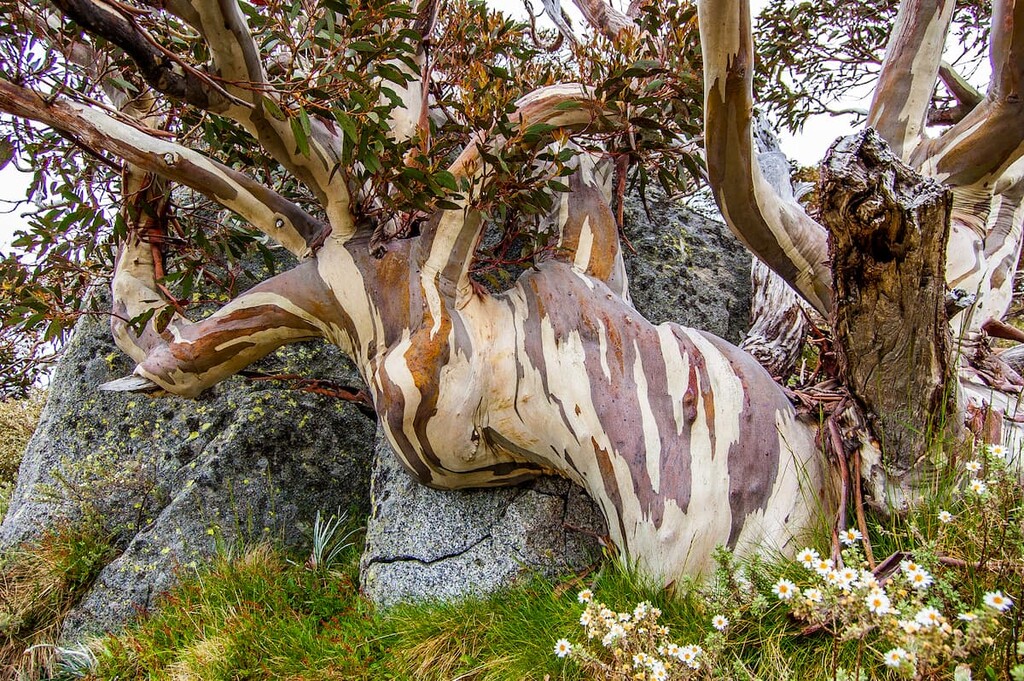
According to the WWF, Australia contains 7 habitat types, including:
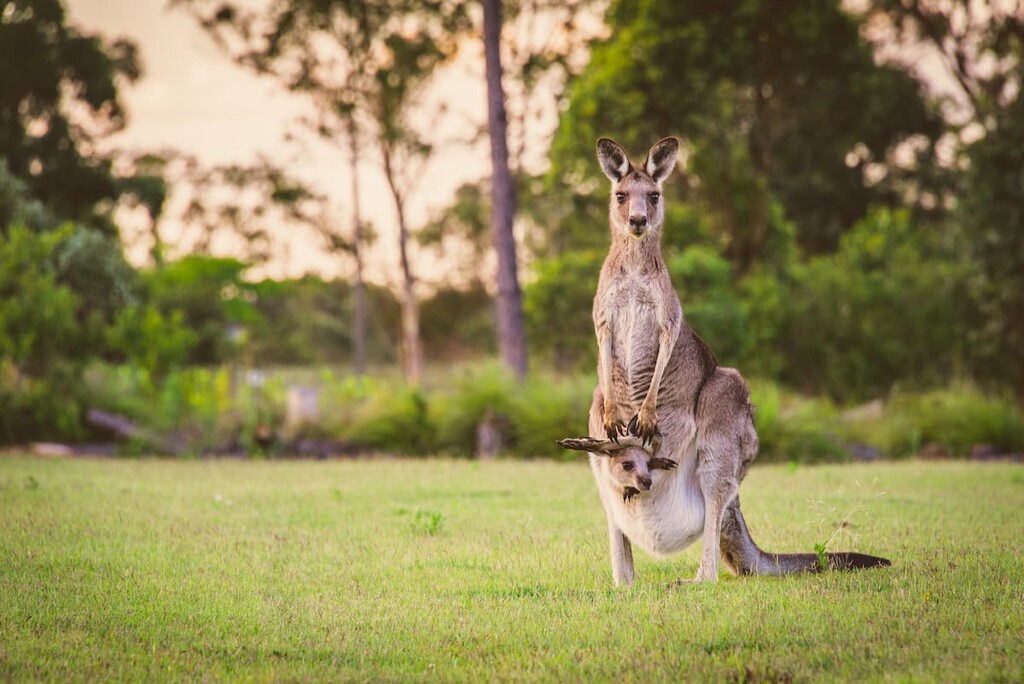
Furthermore, within these 7 habitat types, Australia contains 40 different terrestrial ecoregions. These ecoregions contain everything from the tropical savanna of the Kimberly to the Antipodes Subantarctic Islands tundra and the Great Victoria Desert.
It’s also worth pointing out that Australia is home to a superb array of wildlife that is found nowhere else in the world. In fact, it’s estimated that over 80% of the mammals, reptiles, fish, amphibians, and insects in the country are endemic to the continent.
There are many animals that are traditionally associated with Australia. Some of the more famous animals include the various kangaroo species, koalas, echidnas, quolls, and quokkas. Australia is also home to the platypus, which is a venomous, egg-laying amphibious mammal with a curiously duck-like bill.
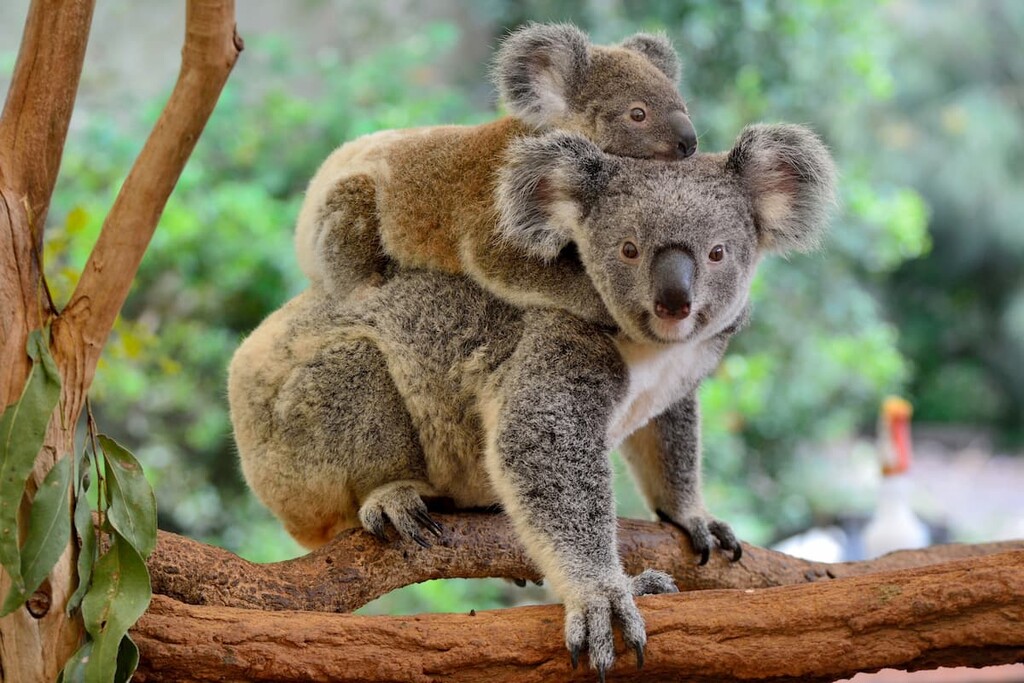
As far as birds go, perhaps the best-known birds in Australia are the emus and the cassowary. The coasts of Australia are also an ideal habitat for seabirds, including the Australian pelican. The blue penguin or kororā, which is the world’s smallest penguin, is also found in parts of Australia.
Australia is known for its collection of amphibians and reptiles. It is one of the few places on Earth where there are more venomous than non-venomous reptiles. There are also saltwater crocodiles, which are the largest crocodiles, that live in coastal northern Australia.
One of the more infamous amphibians in the country, however, is not native to Australia. In fact, the cane toad, which is native to the Americas, was introduced to Australia in the 1930s in a failed pest control experiment. Instead of protecting sugar cane from pests, the cane toads now run rampant in parts of the country.
Finally, we’d be remiss if we didn’t mention Australia’s spectacular marine life. The country is home to the Great Barrier Reef, which is the largest coral reef system in the world. There are hundreds of coral species found in the reef as well as thousands of other marine species that call the reef home.
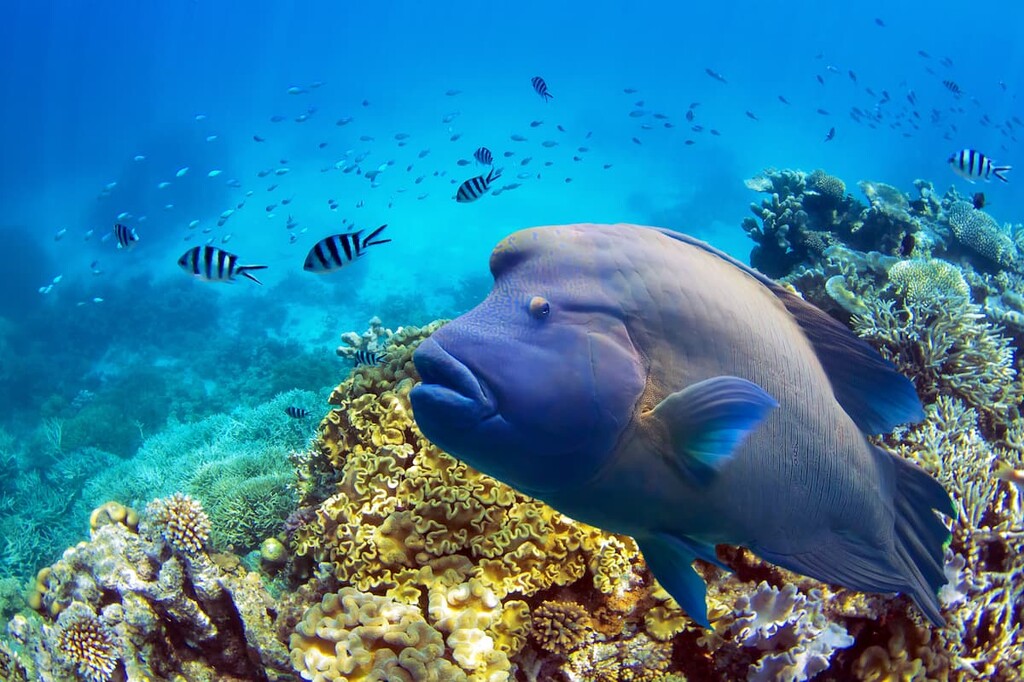
The human history of the land now called Australia dates back tens of thousands of years. Indeed, the first peoples to have lived in what is now the country of Australia likely arrived on the continent between 40,000 and 70,000 years ago.
The First Nations of what is now Australia include countless distinct tribal nations and cultures that have lived throughout mainland Australia, the Torres Strait Islands, Tasmania, and the surrounding islands since time immemorial. There are several hundred Australian Indigenous languages, many of which are spoken in Indigenous communities today.
Although Indigenous peoples have lived in Australia since time immemorial, peoples of European descent started making claims to the land soon after their arrival.
It’s believed that the first people of European descent to have visited what is now Australia were members of Willem Janszoon of Netherlands’ 1606 expedition. During this time, the Dutch claimed the land as their own (though no land was ever willingly ceded by Indigenous Australians) as part of what they called New Holland.
Nevertheless, perhaps the most famous person of European descent to have arrived in what is now Australia during the eighteenth century was Captain James Cook of Great Britain. Cook arrived on Possession Island in the Torres Strait in 1770 and claimed the region (which had not been ceded by Indigenous Australians) for Great Britain.
After Cook’s arrival and after their loss of substantial North American territories after the American Revolutionary War, the British decided to establish a colony at Botany Bay. After some discussion, the British then decided to use their new colony as a penal colony for convicts from Great Britain.
Throughout the next few decades, the British established a number of colonies throughout the continent. Colonization of the continent led to violent conflict with the Indigenous peoples of Australia who had not ceded land to the British for colonization. In addition to violence and forced labor, many Indigenous peoples died as a result of introduced diseases to the region.
After gold was discovered on the continent in the 1850s, Australia became a more attractive destination for international immigrants, particularly from Europe, North America and parts of eastern Asia.
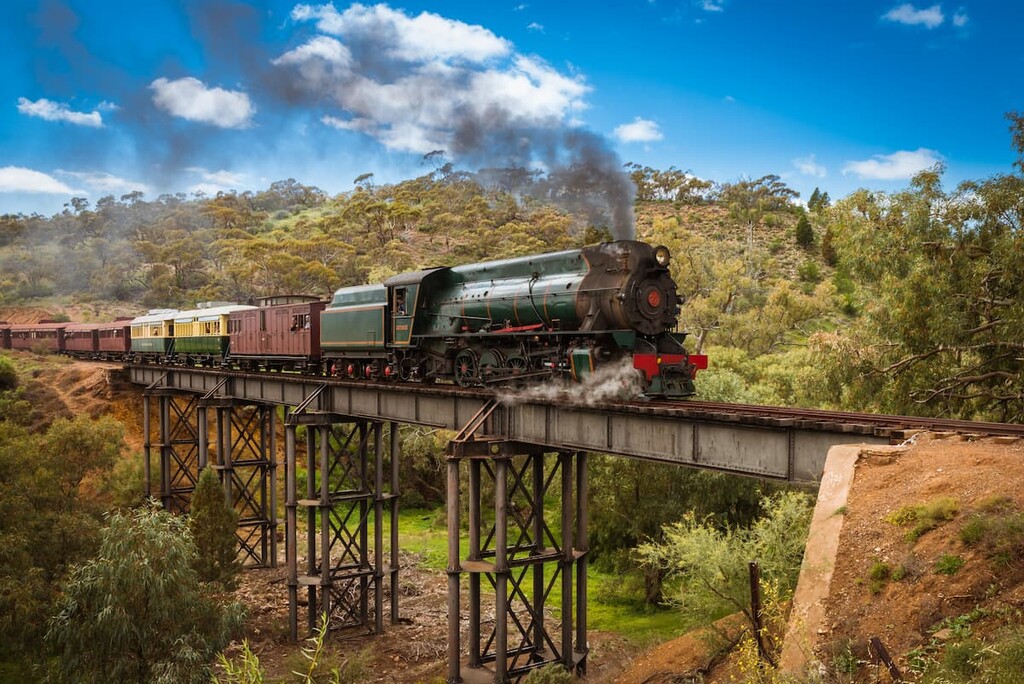
Over the decades, Australia saw a push for greater independence and self-governance. By 1901, this vision became a reality when Australia’s Federal Constitution was proclaimed by the Governor-General of Australia. Afterward, Australia was able to hold its own federal elections and self-govern its own affairs.
Australia had a tumultuous twentieth century. The young nation fought in the First World War as part of the Australian and New Zealand Army Corps (ANZAC), which is perhaps best known for its efforts during the Gallipoli campaign.
After World War I, Australia officially became a sovereign nation under the Statute of Westminster. The Great Depression was a difficult time in Australia, which saw a great decline in its major exports.
Australia was also active in World War II, having sent regiments to fight in nearly all corners of the Allies’ varied campaigns. They were particularly active in various parts of the Mediterranean theater and in parts of the Pacific theater.
The years since the Second World War have been, for the most part, a time of growth for Australia. The country has seen substantial growth in its economy and has forged many strong international alliances.
These days, Australia is a major player in global politics and in the international economy. It is a major tourist destination and a producer of a substantial amount of essential raw materials. The country’s excellent natural resource, rich cultural history, and stunning landscapes makes it an excellent place to visit if you’re able to catch a flight down under.
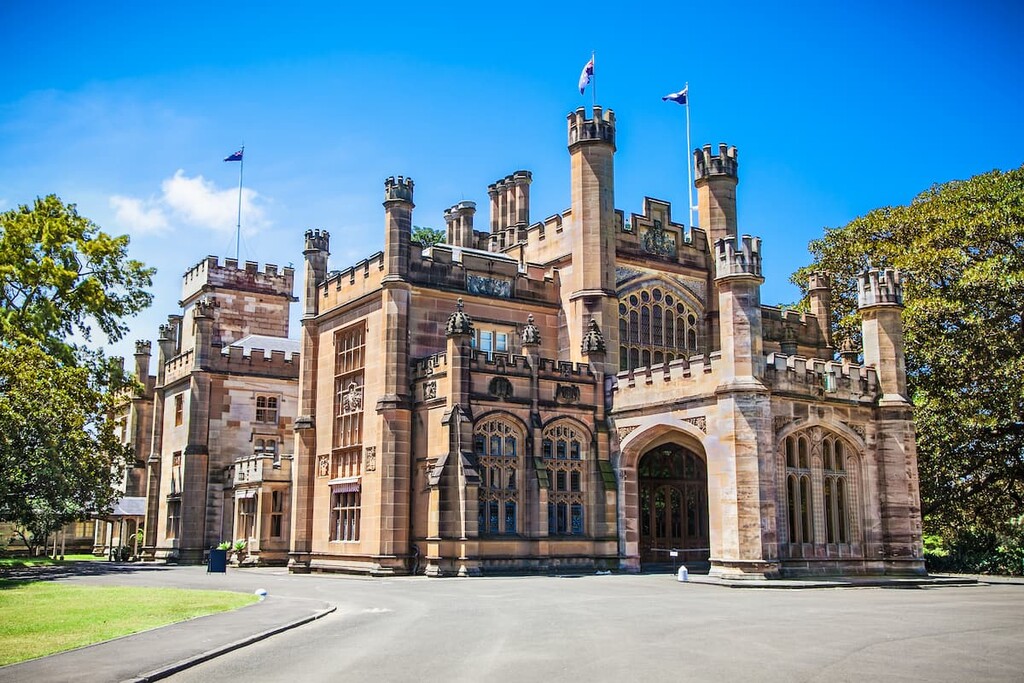
With thousands of parks and protected areas across its landscape, there’s no shortage of adventure to be had in Australia. Here are some of the best places in the country to check out on your next visit:
One of the most iconic places in Australia, Uluṟu-Kata Tjuṯa National Park is a federally-protected area located in the southeastern part of the Northern Territory. It contains 5 named mountains, the highest and most prominent of which is Kata Tjuta.
The park is best known for its stunning geologic formations, which include both Uluṟu and Kata Tjuṯa. It is part of the traditional territory of the Anangu, for whom the land is sacred. Within the park, there are a number of important cultural sites and remains.
However, it’s worth noting that, while visitors are allowed to view Uluṟu from afar, the national park’s board voted to permanently end climbing on the mountain in 2017 due to the cultural and spiritual significance of the site.

Home to mainland Australia’s highest peak, Kosciuszko National Park is a protected area located in New South Wales and the Australian Capital Territory. The park contains 233 named mountains, the highest and most prominent of which is Mount Kosciuszko.
Kosciuszko National Park is one of New South Wales’ premier hiking destinations. It is just a few hours drive from Canberra and it boasts plenty of hiking trails for all to enjoy. There are also alpine skiing opportunities in the park during the winter, so it’s one of the best places to visit if you’re looking to see snow in Australia.
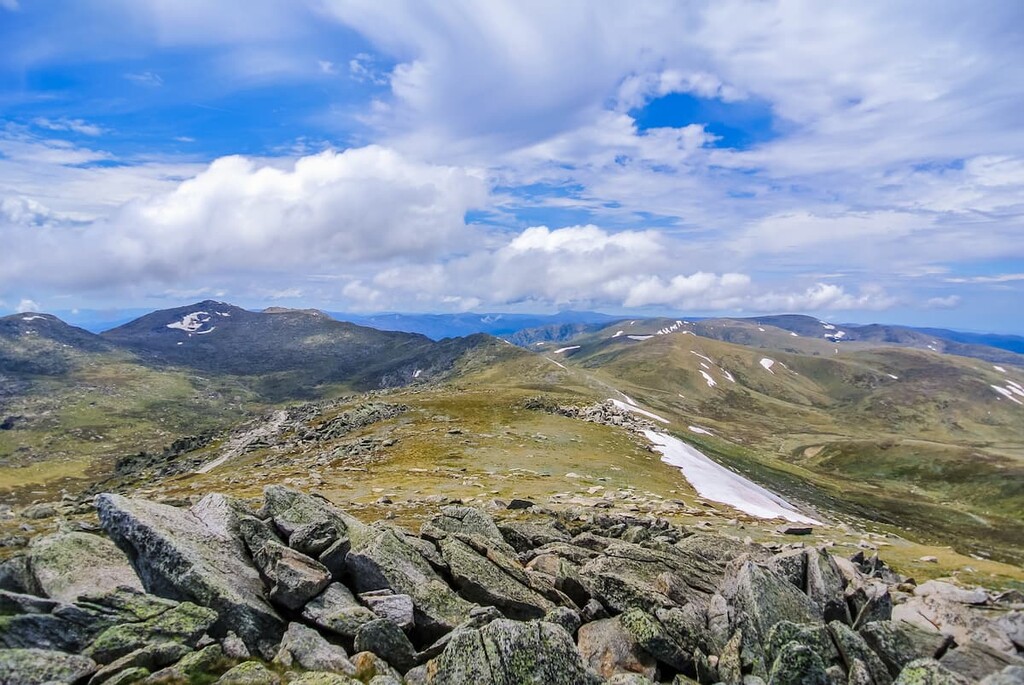
Located just outside Sydney, Royal National Park is a fantastic place to visit if you’re looking for an adventure. The park contains 17 named mountains, the highest and most prominent of which is Bulgo Hill.
Royals National Park is actually the world’s second oldest national park, having been established just a few years after Wyoming’s Yellowstone National Park in the United States.
These days, Royal National Park offers hiking opportunities through its stunning landscapes. It boasts coastal heathlands and rainforests, so there’s something for everyone to love in the park.

Situated to the west of Sydney, Blue Mountains National Park is one of the most popular outdoor recreation destinations in the country. It contains 200 named mountains, the highest of which is Bald Mountain.
Blue Mountains National Park features a rugged landscape of dissected plateaus that are known for their scenic vistas. The park is particularly biodiverse, too, and there are plenty of endangered species in the region. Rock climbing, hiking, and other outdoor pursuits are all possible within the park.
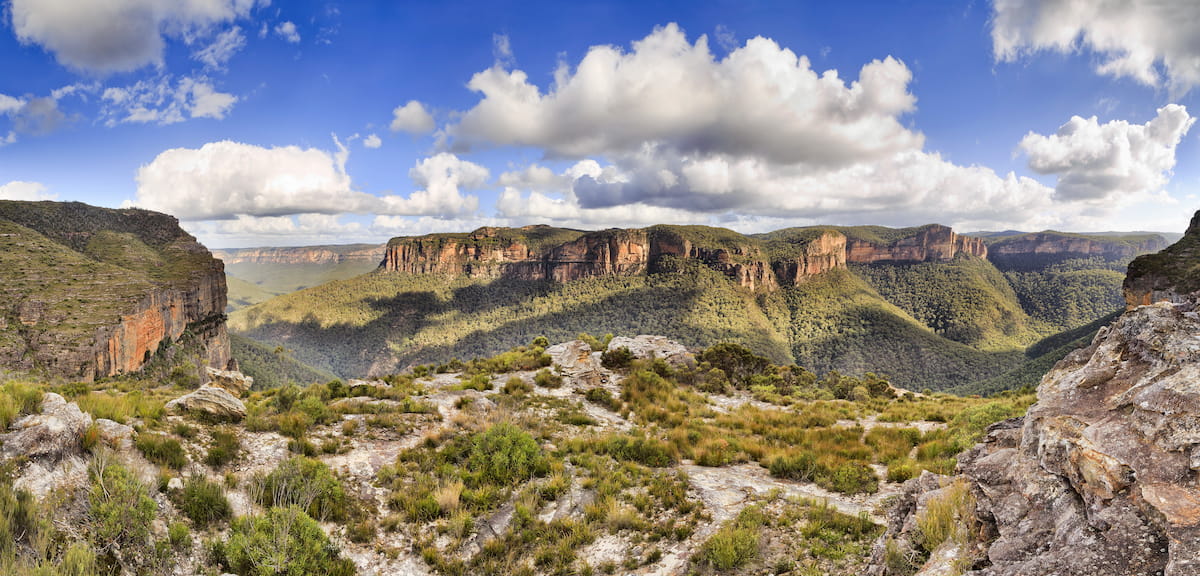
Grampians National Park is situated in western Victoria and it is known for its world-class rock climbing. The park contains 66 named mountains, the highest and most prominent of which is Mount William.
Often called simply the Grampians (Gariwerd), Grampians National Park boasts a series of sandstone cliffs, many of which are home to important rock art sites.
The park is a very popular hiking and climbing destination. However, there has been some controversy in recent years over damage to cultural sites at the park. As a result, Parks Victoria closed about 30% of the park’s climbing areas, an issue which has not yet been resolved.
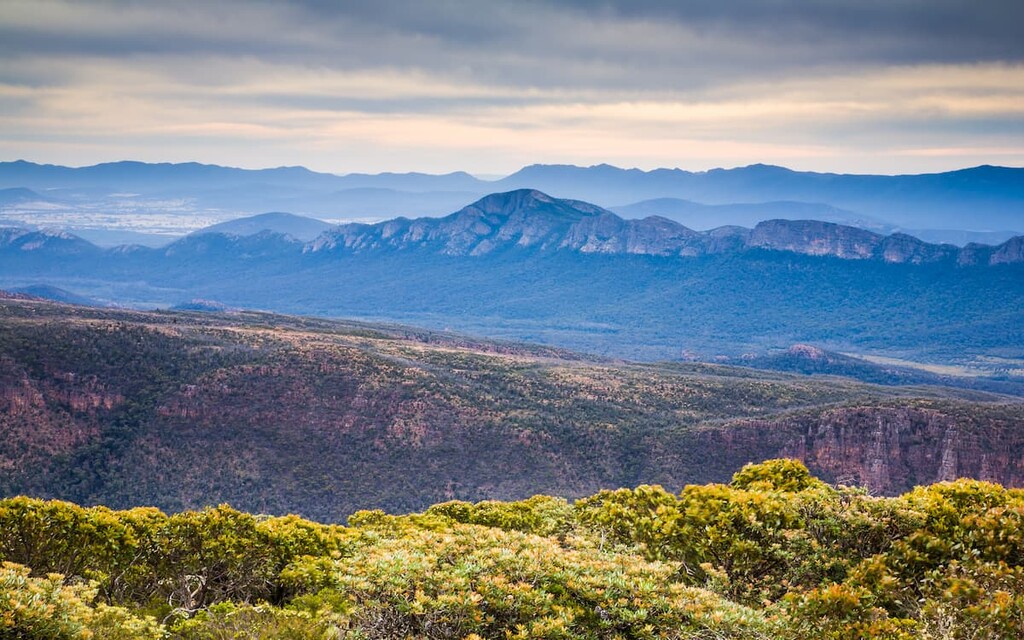
For skiing and snowboarding enthusiasts, there are 8 ski resorts in Australia. They are located in the Australian Alps, the highest region of the Great Dividing Range, in the south of the country right between its two largest cities—Sydney and Melbourne. Respectively, on the administrative map, the country’s major ski regions are New South Wales and Victoria.
The largest ski resort in Australia is Perisher in New South Wales with more than 60 km (37 mi) of slopes and more than 45 ski lifts in total. Other four major areas for skiing in Australia with more than 10 km (6 mi) of slopes and more than 5 ski lifts each include the following in descending order of size: Thredbo, Falls Creek, Mt. Buller, Mount Hotham, Charlotte Pass, as well as Selwyn Snowfields—the main ski resort near Sydney, and Mount Baw Baw—the main ski resort near Melbourne.
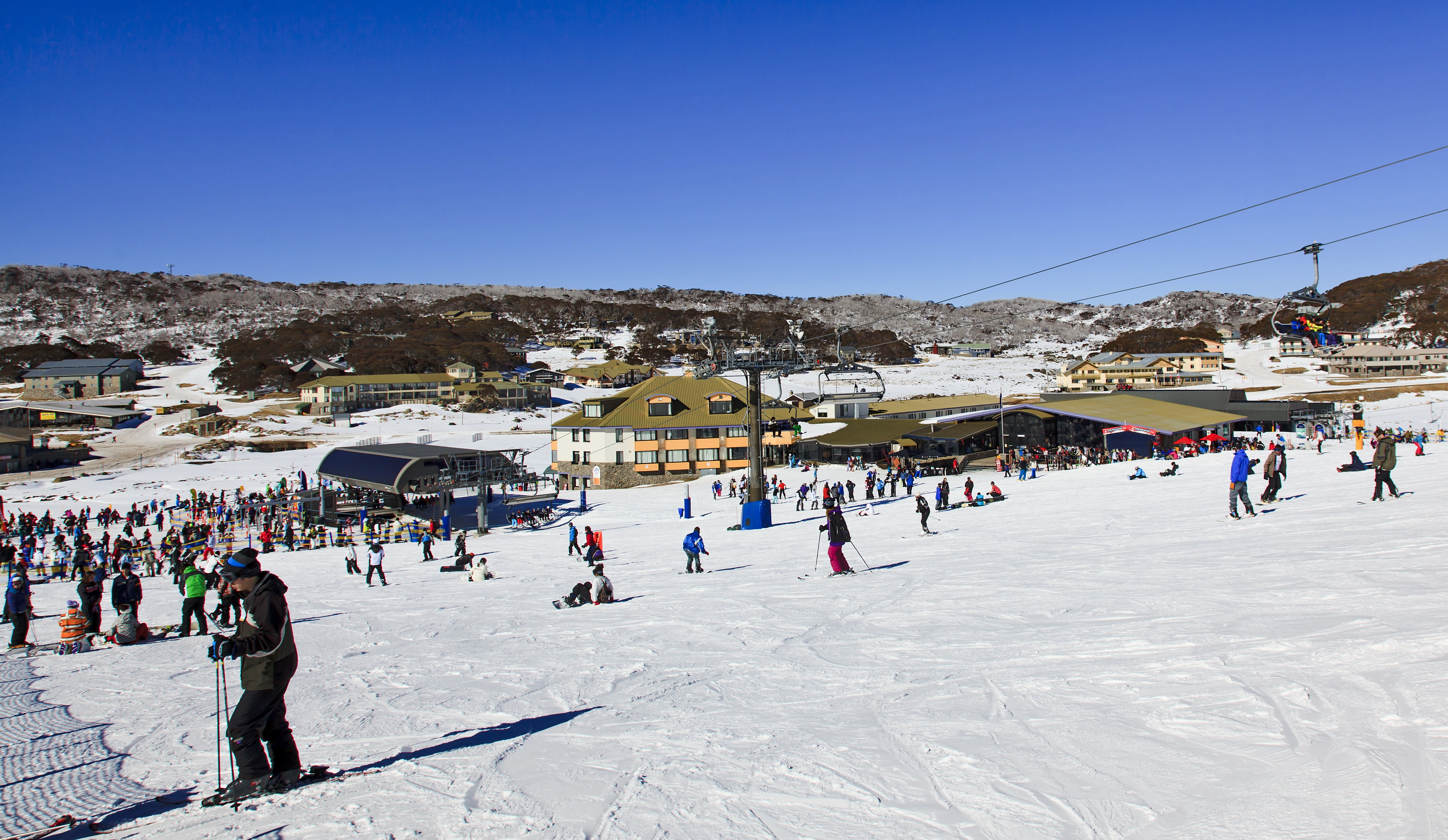
Check the Australia ski resorts map in the World Mountain Lifts section of the site. It includes information about open ski lifts / slopes in Australia in real-time with opening dates and hours. There are also year-round cable cars, funiculars, cog railways, aerial tramways, and all other types of mountain lifts.
Looking for a place to stay during your trip to Australia? Here are some of the best cities to check out:
The most populous city in Australia, Sydney is located on the eastern coast of the country in New South Wales. It is home to about 5.3 million people, which is about 65% of the state’s population.
Sydney is often listed as one of the world’s most expensive places to live, but it also ranks high in terms of livability. It has a highly diversified economy that relies on finance, tourism, and manufacturing. It is also a cultural hub for the country as it is home to a number of major universities, sporting events, and World Heritage Sites.

Melbourne is the capital and largest city in the state of Victoria. It is home to about 5 million people, which accounts for nearly one-fifth of all of Australia’s residents.
The city is located in southeastern Australia and it is home to some of the country’s most popular tourist destinations. It hosts the Australian Open tennis tournament every year, which is a major event for the region. Furthermore, Melbourn often ranks high in terms of livability, so it’s a great place to visit if you’re in the area.

The largest city in Australia that’s not located in the eastern half of the country, Perth is a community of some 2.1 million people located in Western Australia. It is known for its fantastic arts scene and museums as well as its many cultural sites.
Perth hosts a number of important festivals each year, which are a major part of its tourism industry. It’s also one of the most popular domestic tourist destinations in the country, bringing nearly 3 million Australians to the region each year.

The capital and most populous city in Queensland, Brisban is home to some 2.5 million people who live in the east-central part of the country. It is one of the oldest European-founded cities in the country.
Brisbane is known for its great restaurants and tourist destinations. It is a popular place to visit among domestic and international tourists thanks to its proximity to a number of important outdoor recreation destinations.
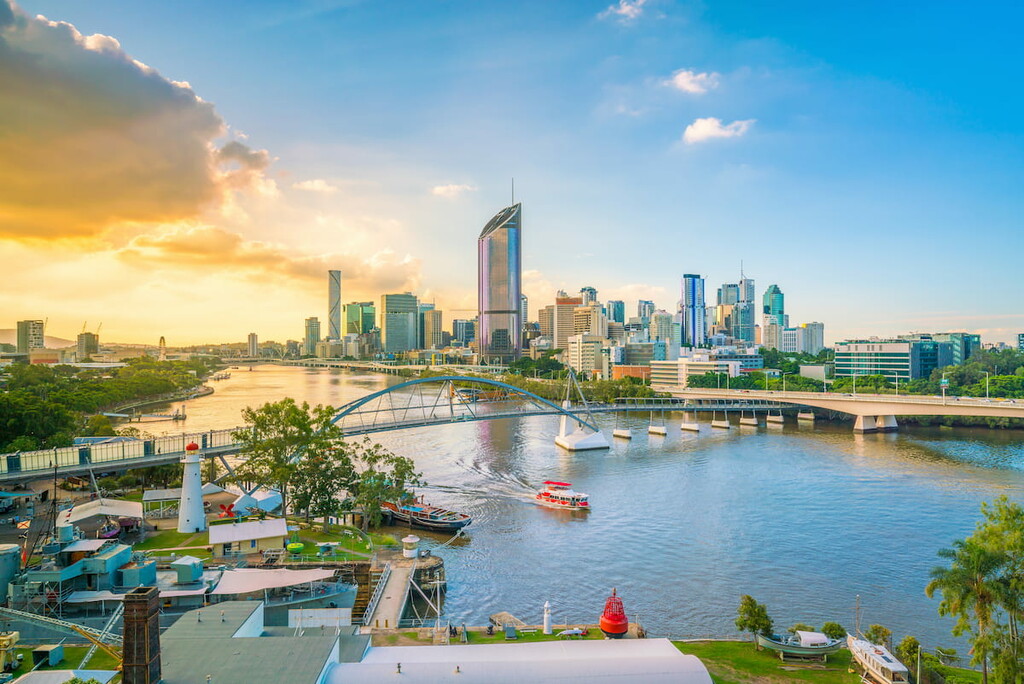
Adelaide is the capital of South Australia and the country’s fifth-most populous city. It is located in the Adelaide Plains in the southern part of the country and it has long played an important role in the country’s history.
Adelaide is often called the “City of Churches” for its many famous church buildings. It also has a booming wine and food industry, so it’s well worth a visit.
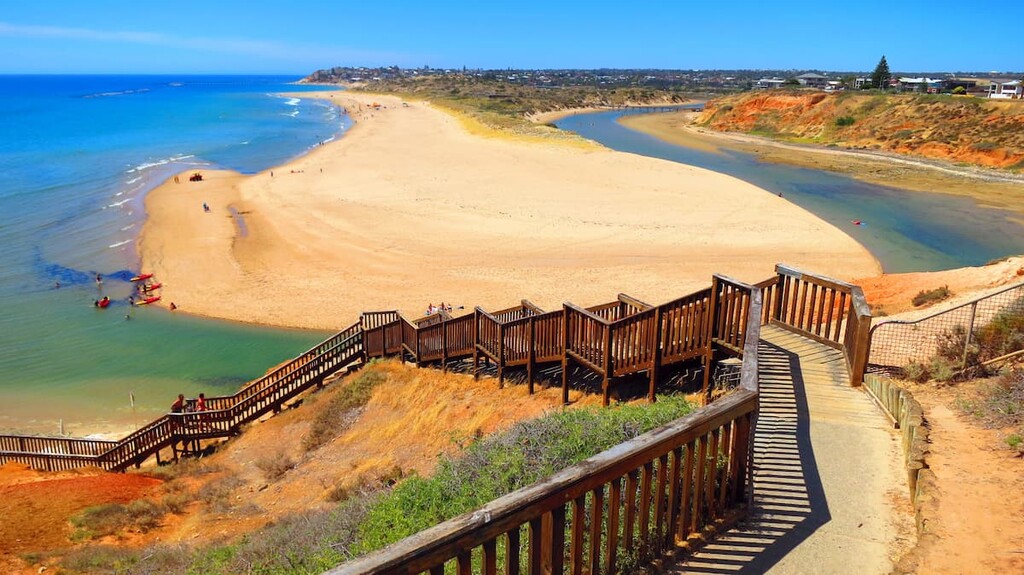
Located on the island of Tasmania, Hobart is a city of some 245,000 people, which is about half of the island’s population. It is located along the shores of one of the world’s deepest natural ports, so it is a major shipping hub in the region.
Hobart is the gateway to Tasmania’s excellent outdoor recreation opportunities. The city is well connected to the island’s Central Highlands, so it’s a great place to visit if you’re looking to do some hiking in Tasmania.
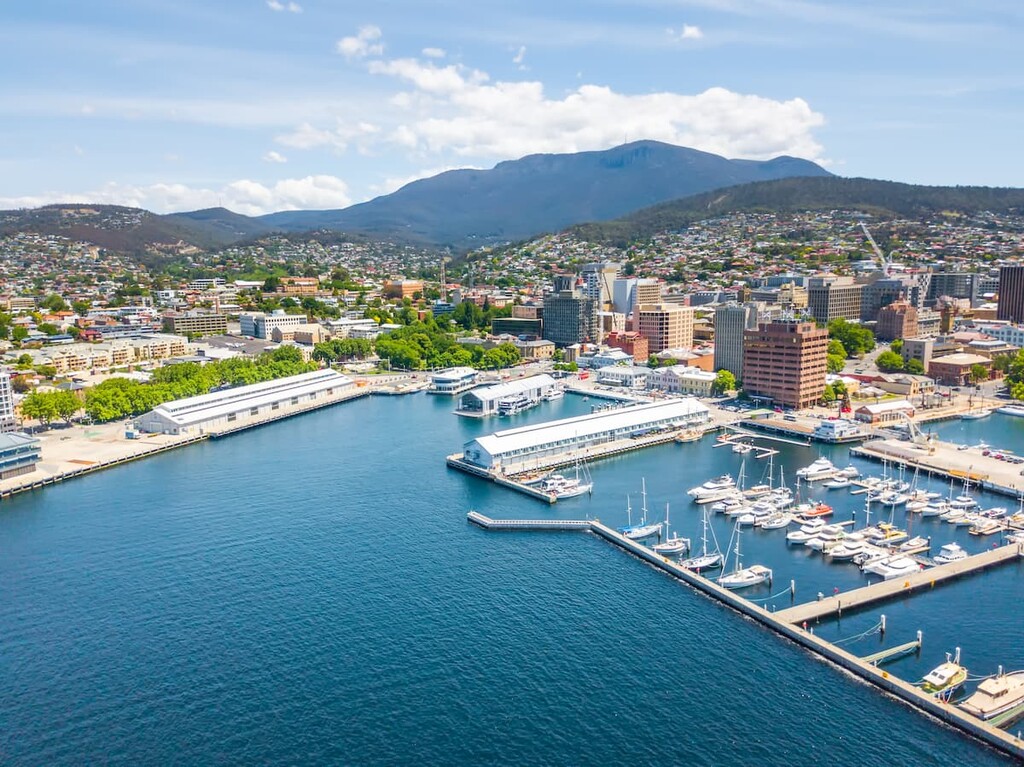
Explore Australia with the PeakVisor 3D Map and identify its summits.








